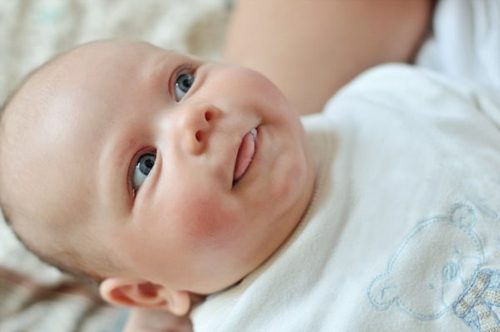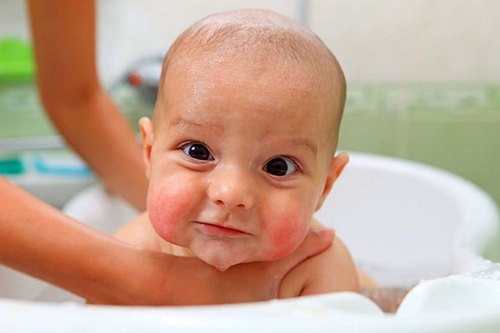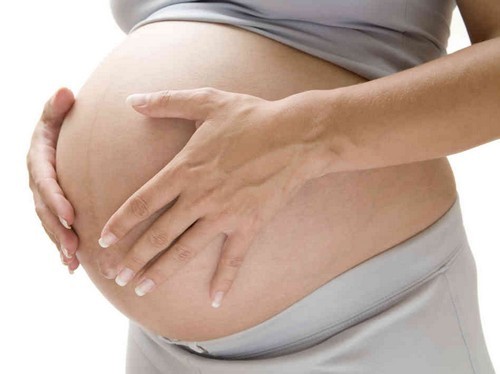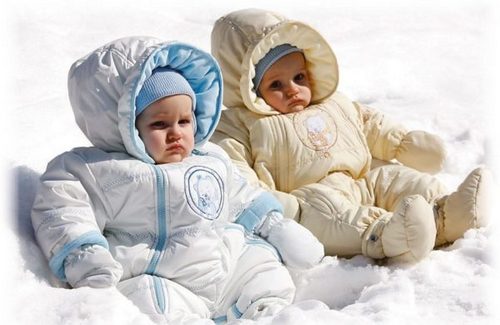Allergy is the most common disease at an early age. And, indeed, it is difficult these days to meet a baby without redness and flaky cheeks and knees, without skin irritation and itching.
Many young mothers complain about certain manifestations of diathesis or dermatitis in a child. But, despite the prevalence of the disease at this age, allergy in infants is a poorly understood problem.
The immune system and its mechanism of work are still fraught with many mysteries. Allergies in infants can develop in response to nutritional, medicinal, contact, and respiratory factors.
Treatment of any condition begins with determining its cause. Conservative therapy is necessary in the acute stage of the disease to eliminate the clinical symptoms of distress. The focus is on prevention.
Types of Allergies
Hypersensitivity reactions can be caused by various factors.
Food allergy
Most often, babies have a food allergy. It is due to intolerance to certain foods. Food allergens include citruses, sweets, eggs, and more. Individual allergens for each organism provoke the development of the disease, including allergies in the newborn, the treatment of which should be carried out under the supervision of a doctor.
Most often, a food allergy begins to form already during pregnancy, while the baby is in the womb. For this reason, expectant mothers are highly discouraged from eating highly allergenic foods.
Pathology can be detected at any age in the form of allergy manifestations such as a rash, allergic dermatitis, and signs of rhinitis. Digestive tract disorders and changes in the biochemical composition of blood, as shown by a laboratory test, can also occur.
The fight against food allergies is the complete exclusion of provocateurs from the diet and adherence to a diet recommended by a pediatrician or allergist. Drug therapy is rarely used, mainly for symptomatic purposes.

Drug allergy
The mechanism of the development of the disease is directly related to the increased sensitivity of the body to the individual components of medications. Often this type of allergy in newborns is combined with food allergies, which is what pediatricians most often pay attention to. The reason, as in the previous case, lies in violations of the body’s immune response.
The clinical manifestations of the pathology are allergic rashes and peeling on the cheeks and skin of the child, urticaria, prickly heat, dyspeptic disorders (nausea, vomiting) and anaphylactic shock. They are not involved in the diagnosis of drug allergies, as this can be life threatening. Prevention of the disease is taking medications strictly as prescribed by the doctor and a complete rejection of drugs that are obviously intolerable by the body.
Respiratory allergy
This type of pathology is associated with the individual sensitivity of the epithelium of the lungs and bronchi to environmental allergens, for example: plant pollen, dust, individual odors.
Symptoms of a respiratory allergy can be rhinitis, rhinosinusitis, laryngitis, tracheitis, and signs of bronchial asthma. But with these signs of distress, there is no elevated body temperature, which makes it possible to distinguish respiratory allergy from infants from colds.
Contact allergy
This type of pathology is also common among young children. The disease manifests itself in the form of itching and rashes on the skin of the baby in response to household chemicals, diapers, wet wipes, low-quality toys, mom’s cosmetics, and much more.
Contact allergy treatment depends on the cause of the disease. The exclusion of allergens from the environment of the child and symptomatic therapy help to quickly eliminate its symptoms.
Causes
Allergies in a child under 1 year of age occur in direct contact with an allergen.

The main causes of the disease:
- contact of the future mother and, accordingly, the fetus with the allergen during pregnancy, which in the future can cause allergies in the newborn or baby;
- violation of the recommended diet by a nursing mother;
- early or incorrect introduction of complementary foods;
- abuse of drugs in the first year of life – they should be prescribed at a minimum, as they are strong allergens;
- household chemicals, dust, animal hair, dyes – all this can cause increased sensitivity to these factors in infants.
Symptoms
Signs of allergies can be observed from different organs and systems.
On the part of the skin
How an allergy manifests itself in infants, even an inexperienced mother will guess: increased dry skin, rash and hyperemia are familiar to everyone under the general term “diathesis,” but the doctor must decide what to treat the disease with.
Typically, these symptoms appear on the face and neck, in the groin and buttocks, on the bends of the elbows and knees. The severity of their severity varies from mild rashes to deep lesions of the dermis – cracks and weeping wounds.
Symptoms of allergies in infants that appear on the skin are related to atopic and allergic dermatitis or eczema.
From the digestive system
How is allergy manifested in children if the gastrointestinal tract is disturbed? The baby is tormented by colic, bloating, profuse regurgitation, problems with stool (often constipation), dysbiosis. Similar symptoms are characteristic of a food type of allergy.
From the respiratory tract
If allergens in the air became provocateurs of the disease, allergies in the baby appear as respiratory reactions: swelling of the nasopharynx and nasal congestion, rhinitis, cough, hyperemia of the eyes, lacrimation. These signs resemble SARS, but they occur without an increase in body temperature.
From the nervous system
A child suffering from allergies, regardless of their type, experiences physical and psychological discomfort, anxiety, is irritated and cries for a long time, combes itchy skin, refuses to eat and does not sleep well at night.
Diagnostics
If the baby is allergic, and she looks like described above, it is necessary to consult a pediatrician and an allergist. Any signs of the disease can not be taken lightly, since this condition, even harmless in appearance, affects the work of the whole organism (immune system, digestive tract) and does not affect the well-being of the child in the best way.

To make a diagnosis and confirm whether there may be an allergy in an infant, it is necessary to show the child to a specialist. Better to start with a pediatrician who is familiar with the baby’s medical history. Usually, the doctor interviews parents about the relationship of the reaction of the body with food or household factors.
The next diagnostic step is a laboratory blood test of a small patient. If an increased amount of eosinophils and immunoglobulin E is detected, then this confirms the presence of allergies in the body. In addition, an abdominal ultrasound can be prescribed to identify problems with the stomach and intestines.
Skin tests for possible allergens in infants are not taken. Usually they are carried out at an older age and always before or after the end of the course of antihistamine therapy, but not at the height of the disease. Also, the pediatrician can advise the young mother to keep a special food diary in which she can record how the allergy manifests itself in the newborn baby, and that she or the baby ate during the day.
Treatment
Severe allergies in infants are usually treated in stationary conditions. In other cases, the relief of signs of pathology occurs on an outpatient basis after completing the appointments of the attending physician. But, first of all, the fight against any type of allergy begins with the exclusion of contact with allergens.
Feeding the baby during the treatment period is prohibited. Familiarity with new foods will have to be postponed indefinitely.
The conservative treatment of allergies in infants includes the following drugs.
- Probiotics are drugs that normalize the intestinal microflora and eliminate dyspeptic disorders: Acipol, Enterol, Linex.
- Enterosorbents – drugs that bind and promote the elimination of allergens and their decomposition products from the body: Activated carbon, Polyphepan, Smecta.
- Sedatives – relieve the itching and anxiety associated with this symptom: herbal teas based on lemon balm and peppermint.
- Antihistamines – fight against catarrhal phenomena, itching and rashes on the skin (Fenistil, Zirtek). Dosage forms of antihistamines vary – it can be drops, syrups, tablets and ointments. Depending on how the child is allergic, what to prescribe and what to do should be decided by the doctor. With skin manifestations, a specialist can prescribe local treatment with antihistamine ointments, with allergic rhinitis – drops in the nose, and if the symptoms of the pathology have common manifestations – both external and internal, then oral forms of the drug are preferred.
Conservative therapy, in fairness, is secondary to the treatment of allergic diseases in infants. The listed drugs do not treat, but only remove signs of trouble. And besides, they themselves can cause allergies.
Prevention
Dealing with potential allergens is the task of every young mother.

This will require :
- monitor the cleanliness of the room, since dust is a common allergen;
- wash baby bedding and clothes with hypoallergenic detergents at high temperature twice a week;
- choose special hypoallergenic cosmetics for baby care;
- follow a diet during lactation, avoiding prohibited foods;
- comply with the timing and rules of the introduction of complementary foods.
Many young mothers know firsthand how allergies look in a newborn and how long the disease goes. Fortunately, the pathology is easily treatable if the main condition is met – the source of allergy is found and excluded, the provoking factor.
The disease can not be ignored or self-medicated, since it affects the important systems of the body and the well-being of the baby.



